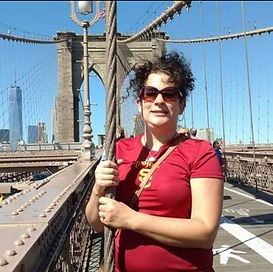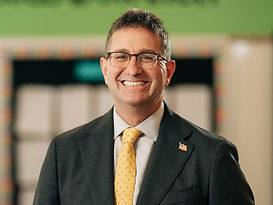GUEST COLUMN.
988 SAVES LIVES – BUT WILL STATES SUSTAIN IT?
By Stephanie Pasternak, director, state affairs, government relations, policy and advocacy, National Alliance on Mental Illness

There’s a revolution happening in mental health care right now and it’s already helped millions of people struggling with thoughts of suicide, mental illness, addiction, or any kind of emotional distress.
I’m writing about 9-8-8, the new national hotline for mental health crises. Congress provided some grants to states to expand staffing and capacity at 988 call centers, but the majority of that funding expires at the end of FY 2024. This means that the long-term funding plan for 988 has been left up to states and local communities. And that means that its future is uncertain.
A little history: In 2020, Congress unanimously passed the National Suicide Hotline Designation Act, the landmark law that created 988. The number officially became available nationwide in July 2022. From the beginning, we at NAMI, the National Alliance on Mental Illness, have been deep in the trenches fighting at the federal and state-level to make sure 988 is properly funded and able to provide the best possible response to people in crisis.
The 988 Suicide and Crisis Lifeline is built upon the former National Suicide Prevention Lifeline (1-800-273-TALK) and huge increases in contact volume were expected with the easy-to-remember 988 number. The predictions proved correct because in the first year of 988, the Lifeline experienced over 40% increase in calls, compared to the prior year. The increases in texts and chats were exponentially higher with 1,135% and 141% respectively.
Notwithstanding the successes and potential of 988, it’s just a shadow of what it could be. In our latest public awareness poll, conducted in partnership with Ipsos, we found that only 22% of Americans are familiar with the 988 Lifeline and 29% say they've never heard of it.
These numbers are not surprising when you consider there has been little national marketing for awareness of 988. It may seem strange to not widely advertise the existence of a new lifesaving resource, but no money was appropriated for any awareness campaigns. Additionally, there were concerns about the capacity of 988 call centers to handle the volume of calls, texts and chats that they would receive.
Fortunately, the Congress had the foresight to offer states a new funding option for 988 – one that would be reliable year-after-year and wouldn’t pull funds away from any existing budget items. In the federal 988 law, Congress permitted states to permanently fund 988 the same way 911 is funded, which is through small telecommunication fees on residents’ monthly phone bills.
Sadly, most states have yet to permanently fund 988. Only eight states have passed legislation creating a 988 fee (CA, CO, DE, MN, NV, OR, VA, and WA). The fees are gamechangers for states looking to provide a more robust 988 response. For example, Washington state’s 40-cent a month 988 fee has enabled call centers to hire more staff, which means shorter wait times for help seekers.
With so little consistent funding, how are people on the front lines – the crisis counselors that answer 988 contacts – doing? A first-of-its-kind survey of crisis counselors released in January by CrisisCrowd gives us some insight. Counselors described burnout as being commonplace among their peers. They also described challenging working conditions saying that work days may be up to 12 hours long, with as little as 15 minutes total per day of time to spend recovering from especially difficult crisis calls.
Training and ongoing education for counselors also impacts the quality of the response provided to someone who calls 988. The CrisisCrowd survey pointed to wide variations in training for counselors – some received extensive training, but others received only a few days of training. Lack of training can have real consequences and many counselors said they had not been prepared for the wide range of calls of varying levels of intensity that they would face.
Perhaps most concerning of all were the different expectations given to counselors for how long they should stay on the phone with callers. Some counselors said they were expected to end conversations with first-time contacts who didn’t have immediate plans of suicide within 15 minutes. Others reported limits of up to an hour.
If 988 is to become as well-known as 911 and looked at as a trusted resource, call seekers need to know that they will have a positive user experience when they call. The 988 Suicide and Crisis Lifeline has been available for less than 2 years, but the reputation it builds now will impact people’s wiliness to reach out for help for many years to come. If the funding and staffing challenges that call centers are experiencing now are not addressed, it’s difficult to see how everyone in need will get the high-quality response they deserve.
It’s time states properly funded the system that helps individuals and families get through some of the worst moments of their lives.
We hope more states will act to implement 988 telecommunications fees, bringing stable and permanent funding to 988. NAMI will be watching and tracking those movements on our 988 ReimagineCrisis State Legislation Tracker here.
The contents of this guest column are those of the author and not necessarily those of Barrett and Greene, Inc.
#NAMI #NationalAllianceMentalIllness #StateMentalHealth #988SuicideCrisisLifeline #988 #State988Management #988FederalFundingExpiration #State988Fee #State988Funding #StateandLocalSuicidePolicyandManagement #State988Training #StateandLocal988Sustainability #988CounselorTraining #988PublicAwareness #988CrisisResponse #ReimagineCrisisLegislationTracker #NationalSuicideHotlineDesignationAct #CrisisCrowd #StephaniePasternak #BarrettandGreeneGuestColumn



































































































